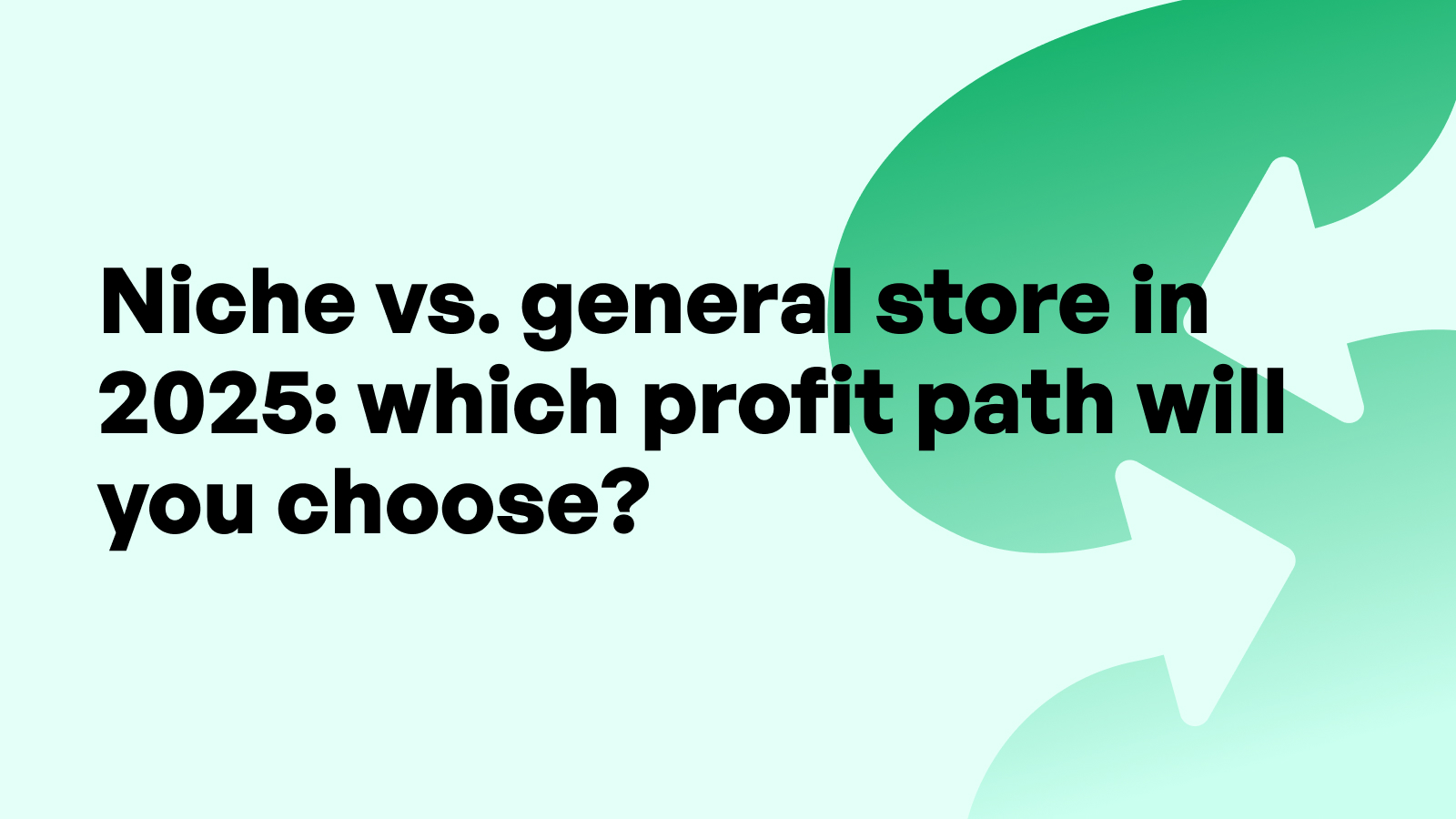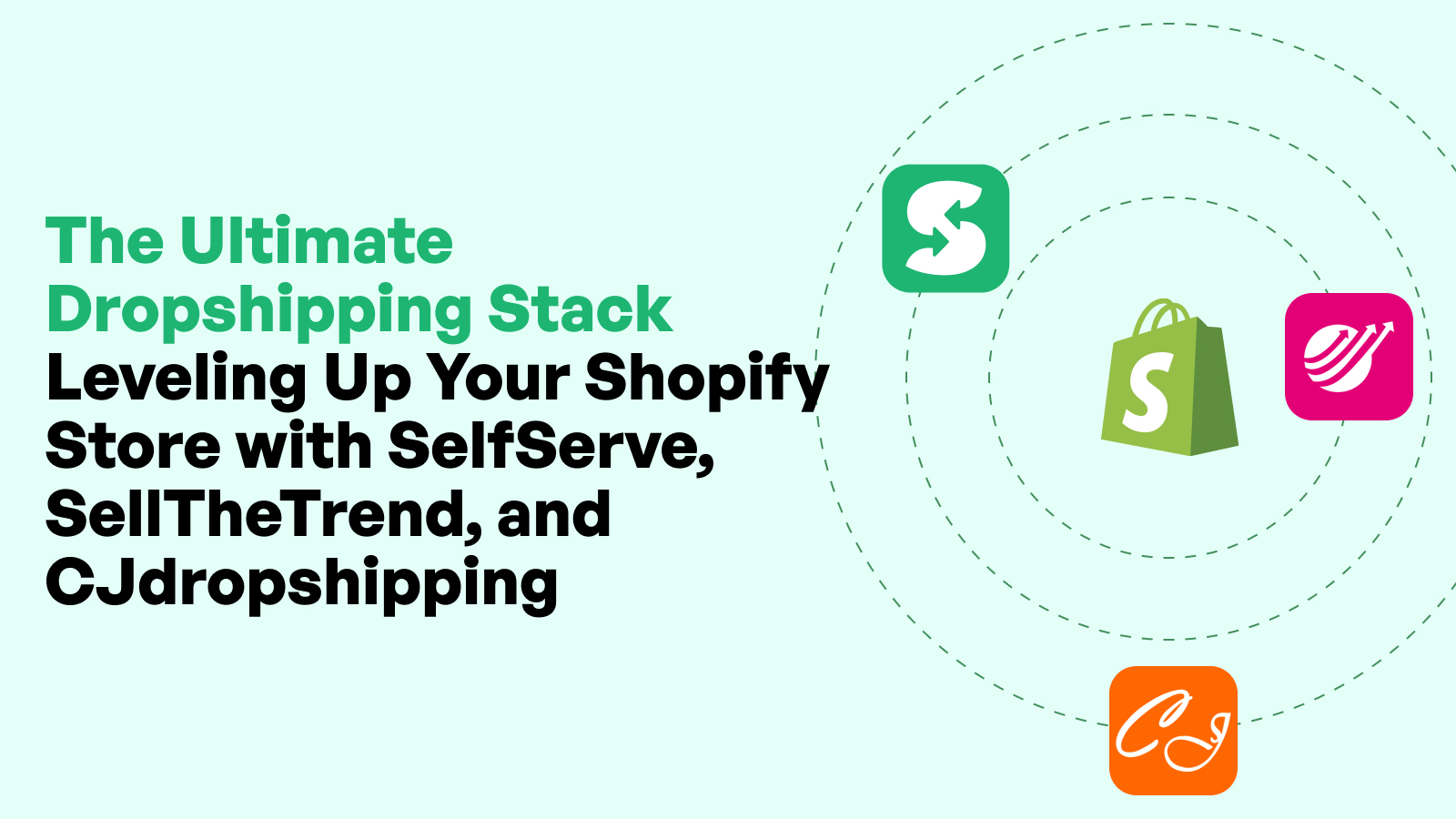Should You Start a Niche Store or a General Store in 2025?

As 2025 ushers in new consumer behaviors and technology shifts, Shopify merchants face a fundamental question: should you build a niche store or opt for a broader general store model? The answer isn’t as straightforward as it may seem. With increased competition, advanced marketing tools, and the need for brand differentiation, making the right choice could determine whether you thrive or stall in your ecommerce journey. This guide unpacks both options thoroughly to help Shopify merchants navigate the decision intelligently.
Understanding the Ecommerce Landscape in 2025
Key Growth Statistics for Shopify Merchants in 2025
Shopify has reported that global ecommerce sales are expected to surpass $7.5 trillion by the end of 2025, and over 60% of those sales will happen via mobile. For Shopify merchants, this represents both an opportunity and a challenge. Markets are growing, but so is the noise. Increased digital advertising costs, algorithm changes, and evolving consumer expectations mean Shopify merchants must be more strategic in how they build their stores from the ground up. The structure and scope of your store play a pivotal role in how well you can compete in this hyper-dynamic environment.
Consumer Trends Shaping Online Shopping Behavior
Today’s consumers, especially Gen Z and millennials, prioritize experience, speed, and personalization. They seek curated, trustworthy brands and often purchase from those that reflect their personal values. Niche stores cater exceptionally well to these expectations by offering products aligned with specific interests. Conversely, general stores appeal to broader audiences but risk dilution in branding and message clarity. In 2025, shoppers expect brands to "speak their language," making relevance more valuable than reach.
Competitive Pressure and Market Saturation
With low barriers to entry, Shopify has empowered millions to start online businesses. This democratization has led to a saturated market in many product categories. General stores must invest heavily in advertising and conversion optimization to maintain profitability. Niche stores, while addressing smaller audiences, enjoy reduced ad competition and often benefit from organic word-of-mouth growth. Choosing between them hinges on how a Shopify merchant plans to carve out visibility and trust.
Defining Niche vs. General Stores
What Is a Niche Store?
A niche store focuses on a specific product category or customer interest. Examples include eco-friendly pet supplies, minimalist jewelry, or keto snack boxes. For Shopify merchants, niche stores offer a streamlined inventory, tighter brand identity, and a laser-focused customer base. These stores allow deep customer understanding, enabling merchants to tailor messaging, product development, and marketing strategies. In a marketplace that rewards relevance and personalization, niche stores often punch above their weight.
What Is a General Store?
General stores are broader in scope, offering multiple product categories under one digital roof. Think of them as the digital equivalent of a department store. These stores can range from curated lifestyle brands to large-scale dropshipping operations. Shopify merchants managing general stores aim for high-volume traffic, scalability, and diversified product offerings. However, they must invest more in branding, customer segmentation, and logistics to avoid appearing unfocused or spammy.
Shopify Examples of Each Model in 2025
In 2025, many successful niche Shopify stores include brands like Wild One (pet accessories), Luxy Hair (beauty), and Haus (home goods). These stores lean into storytelling and build a community around their offerings. On the other hand, general stores like TrendyGoodsHub or UrbanNestMart leverage Shopify Plus features, high ad budgets, and automation to serve mass audiences efficiently. Both models are thriving—when executed with precision.
Pros and Cons of Running a Niche Store
Targeted Marketing and Customer Loyalty
Niche stores make it easier for Shopify merchants to implement highly-targeted marketing campaigns. Whether through Facebook Ads, TikTok creatives, or email segmentation, the messaging feels personalized, which increases conversion rates. Customers who feel understood are more likely to become loyal advocates, reducing long-term customer acquisition costs. This deep audience connection is a strategic advantage that general stores often struggle to replicate.
SEO Advantages of a Niche Store
With a tightly defined product focus, niche Shopify stores can dominate long-tail keyword rankings. Search engines favor domain authority around specific topics, so a well-optimized niche store stands a better chance at ranking higher organically. Content marketing, including blogs, product guides, and niche-specific FAQs, becomes more effective. This organic traffic compound effect builds lasting value for Shopify merchants who invest early in SEO.
Limitations in Product Expansion and Market Reach
The flip side of focus is limitation. Niche stores may outgrow their initial market or face seasonal revenue dips depending on the niche’s volatility. For Shopify merchants, this means that scaling requires expanding horizontally within the niche or launching separate brand extensions. Without strategic foresight, the growth ceiling can be reached sooner than expected.
Inventory Management Simplicity
Niche stores benefit from operational simplicity. Fewer SKUs mean easier inventory tracking, better supplier relationships, and more predictable fulfillment cycles. This streamlined backend is especially advantageous for Shopify merchants managing logistics themselves or using 3PL providers. With fewer moving parts, there’s less room for error, which translates to better customer experiences.
Pros and Cons of Running a General Store
Broad Product Appeal and Higher Volume Potential
General stores attract larger audiences by offering diverse product lines. This diversity means you can cast a wider net and experiment with trending products across multiple categories. For Shopify merchants with robust advertising strategies, this model allows for agile pivoting based on market response. High-volume general stores can also negotiate better terms with suppliers and shipping partners due to bulk transactions.
Cross-Selling and Upselling Opportunities
Having a wide catalog allows general stores to build sophisticated cross-sell and upsell flows. Using Shopify apps like ReConvert or CartHook, merchants can increase average order value with complementary product suggestions. This flexibility makes it easier to design bundles, offer deals, and maximize the value of each customer visit. Data insights from Shopify analytics also support smarter merchandising across product categories.
Increased Advertising Costs and Complexity
With broader targeting comes higher advertising costs. General stores often rely heavily on paid traffic, and managing campaigns for multiple product lines requires more granular segmentation. Without precise ad targeting, ROI can diminish quickly. Shopify merchants running general stores must also manage increased complexity in tracking, attribution, and customer retention workflows.
Challenges with Branding and Identity
One of the greatest weaknesses of a general store is diluted branding. Customers may not form a strong emotional connection with a store that lacks a cohesive story or purpose. In an age where consumers are increasingly values-driven, this lack of identity can lead to reduced trust and lower lifetime value. Successful general Shopify merchants work hard to find a unifying theme or positioning that makes their store feel like more than a product aggregator.
Factors to Consider When Choosing Between Niche and General
Your Budget and Resources
Shopify merchants should begin their store journey with a clear understanding of their budget. Niche stores often require smaller upfront investment due to limited product ranges and leaner ad spend. General stores, on the other hand, demand more capital for product testing, marketing, and backend infrastructure. If you’re bootstrapping or testing product-market fit, a niche store might be the safer initial route. With greater funding, a general store becomes more feasible, especially when scaling is part of the strategy.
Your Marketing Expertise
Marketing skill sets play a critical role in choosing the right model. Niche stores benefit from precise, persona-driven marketing, which suits Shopify merchants comfortable with content creation, influencer partnerships, or community-building. General stores rely heavily on data-driven performance marketing. A merchant who excels at Facebook Ads or Google Shopping campaigns may find the general store model more lucrative. Understanding your strength—brand storytelling vs. analytics-driven growth—can guide your decision.
Long-Term Goals and Brand Vision
Ask yourself what you’re trying to build in five years. Are you aiming for a passionate brand community, or do you want a flexible ecommerce machine that adapts to trends? Shopify merchants who dream of owning a recognizable brand name with long-term equity often choose the niche route. Those who see ecommerce as a revenue vehicle and prioritize agility may gravitate toward general stores. Your store type should align with the exit or expansion goals you envision.
Trends in Global Dropshipping and Product Sourcing
In 2025, international suppliers have improved delivery timelines and reliability. For niche stores, private-label and micro-branding opportunities through services like Printful or Zendrop have grown immensely. General stores benefit from global warehouses and fulfillment platforms like CJ Dropshipping or AutoDS, enabling rapid product testing. Shopify merchants must choose sourcing partners that align with their product scope and customer promise.
SEO and Content Strategy: Which Model Wins?
Building Topic Authority in a Niche Store
Niche Shopify merchants have a unique SEO advantage—they can become topical authorities in a specific space. Google increasingly rewards depth over breadth, meaning in-depth content on a focused subject can outperform shallow content across many categories. A niche pet supply store, for example, can rank for dozens of related keywords by publishing comprehensive guides, care tips, and expert advice. This layered content strategy drives long-term organic traffic and increases domain authority.
Ranking Broad Keywords with a General Store
While general stores may struggle with topical depth, they can target broad, high-traffic keywords across categories. Using structured collections and smart internal linking, Shopify merchants can improve site crawlability and keyword relevance. Blogging for a general store requires a more diverse editorial calendar, covering seasonal products, gift guides, and shopping trends. Though SEO takes longer to build authority, the larger keyword pool offers more surface area for ranking potential.
Content Marketing Opportunities for Each
Content marketing for niche stores typically involves community-oriented posts, how-tos, and user-generated content. General stores lean more on commerce content, like listicles and promotions. Shopify merchants running niche brands can build trust with editorial storytelling, while general store owners might experiment with viral content or SEO-driven product roundups. The content strategy must fit the store’s brand voice and conversion goals.
Conversion Rate Optimization and Customer Experience
How Niche Stores Personalize More Effectively
With a specific target audience, niche Shopify stores can deliver highly personalized experiences. From customized product recommendations to loyalty programs tailored to customer interests, every interaction feels intentional. This not only improves conversion rates but also increases repeat purchase behavior. For Shopify merchants, investing in tools like Klaviyo, Postscript, or Smile.io allows more granular segmentation and automation.
General Stores and A/B Testing at Scale
General stores benefit from data at scale. With thousands of visitors and products, Shopify merchants can run frequent A/B tests on product pages, checkout flows, and pricing models. This experimentation helps optimize for different customer segments and find high-performing combinations faster. Platforms like Google Optimize, VWO, and Shopify’s native analytics support data-driven improvements that drive performance over time.
Shopify Features That Support Both Models
Shopify’s ecosystem supports both niche and general stores with flexible tools like metafields, dynamic collections, app integrations, and mobile-optimized themes. Niche merchants can use these features to enhance branding and storytelling, while general store owners can automate merchandising and cross-category organization. Importantly, tools like the Self Serve Shopify App empower merchants to create frictionless customer experiences at checkout—regardless of store type. This app improves automation, reduces cart abandonment, and increases customer satisfaction in both models.
Hybrid Store Models: A Viable Third Option?
What Is a Hybrid Shopify Store?
A hybrid store blends elements of both niche and general models. For example, a Shopify merchant may focus on a lifestyle niche like “outdoor living” but offer a wide array of products—from camping gear to eco-friendly outdoor furniture. This approach retains the branding clarity of a niche while enjoying the flexibility and scalability of a general store. In 2025, hybrid stores are gaining popularity as merchants seek to balance focus and breadth.
Pros and Cons of the Hybrid Approach
Hybrid stores offer Shopify merchants more room for growth while maintaining customer relevance. You can build authority in a niche and gradually expand your catalog based on customer feedback. However, branding becomes more challenging as you grow. A weak hybrid strategy may confuse your audience or dilute SEO efforts. The key lies in maintaining thematic cohesion across product categories and messaging.
Examples of Successful Hybrid Stores in 2025
Brands like Huckberry and Public Goods exemplify successful hybrid models. These Shopify merchants started with focused branding and expanded through storytelling and curated product expansion. They illustrate that you don’t need to choose one extreme—if you can maintain narrative clarity, a hybrid model can be both defensible and scalable.
Expert Opinions and Merchant Case Studies
Insights from Successful Niche Shopify Merchants
Many niche store owners report that customer loyalty and organic growth are their biggest advantages. Emma Lockhart, founder of a niche skincare brand on Shopify, explains that her brand’s tight product focus made it easier to create content, improve SEO, and earn repeat business. "I built an audience that cared about more than just the product—they felt part of something," she shared. Such loyalty is hard to replicate in a general store setting.
Lessons from General Store Power Sellers
Conversely, general store experts focus on scale and systems. Jake Morton, who operates a multi-million-dollar general store on Shopify Plus, emphasized, “You need the right tech stack and delegation to handle logistics, customer service, and testing. It’s not for the faint of heart, but the upside is massive if you’re data-driven.” For these merchants, operational efficiency is more valuable than brand intimacy.
What Shopify Experts Recommend in 2025
Shopify advisors in 2025 are recommending new sellers begin with a niche store unless they have significant capital and experience. This approach allows for faster brand development, community-building, and leaner operations. As the brand matures, Shopify merchants can decide whether to maintain the niche or expand horizontally into hybrid or general store territory. Starting small and iterating fast is the mantra echoed across expert panels.
Conclusion: Which Store Model Is Right for You?
Choosing between a niche and general Shopify store in 2025 depends on your strengths, resources, and vision. Niche stores excel at community-building and brand depth, while general stores offer flexibility and scaling opportunities. Hybrid stores offer a promising middle ground but require clear strategic execution. Regardless of your choice, focusing on customer experience remains non-negotiable.
For Shopify merchants looking to enhance checkout flows, streamline service, and elevate customer satisfaction, the Self Serve Shopify App offers a robust solution. Whether you’re running a niche, general, or hybrid store, this app empowers customers to manage their own orders—reducing support tickets and improving loyalty. It’s an invaluable tool in 2025’s customer-first ecommerce landscape.
FAQs: Niche vs General Store for Shopify Merchants
1. Is it easier to start a niche store or a general store in 2025? For most Shopify merchants, niche stores are easier to start due to their focused inventory, lower ad spend, and simpler branding. General stores require more capital and marketing expertise from the beginning.
2. Which model offers better long-term growth potential? Both offer strong growth opportunities when executed well. General stores scale faster, but niche stores often enjoy better customer loyalty and lower churn. Hybrid stores combine both advantages.
3. What kind of marketing works best for niche stores? Content marketing, influencer partnerships, and email segmentation work particularly well for niche Shopify stores. These channels allow personalized outreach that resonates with the audience.
4. Can I transition from a niche store to a general store later? Yes. Many Shopify merchants start niche and expand over time. Use customer insights and demand trends to gradually introduce related product lines without compromising your brand’s core identity.
5. How does the Self Serve Shopify App support store performance? The Self Serve Shopify App enhances automation, reduces manual support efforts, and improves the customer experience. This results in higher satisfaction, repeat purchases, and improved operational efficiency across store types.



